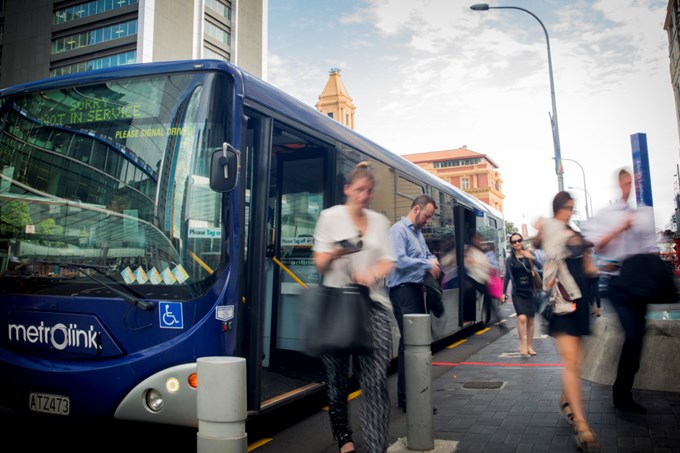Auckland’s Regional Fuel Tax (RFT) is already paying dividends as evidenced by an uptick in growth in public transport use since the tax was introduced last July, says Auckland Council Chief Economist David Norman.
Although public transport patronage in Auckland has been growing in recent years, a sharper uptake has been observed since July 2018. In fact, in the eight months since the end of June, annual patronage in Auckland is up 8.9 per cent compared to the same eight months a year earlier.
This growth rate is twice what we saw in the 12 months to June 2018, and 33 per cent higher than growth in the year to June 2017, a period during which several bus network changes were implemented.
Whereas growth over the previous years has often been driven by modes other than regular local buses – trains and the rapid busway mostly – the recent surge has been widespread across public transport modes.
The relationship between public transport use, petrol prices, population growth, personal preferences and public transport networks is complex. Still, there are two obvious culprits for the uptick commencing in July 2018. From 1 July 2018, the RFT came into effect in Auckland, raising petrol prices. And on 8 July, the new central Auckland bus network came into effect, changing routes and frequencies throughout the isthmus area from New Lynn to Panmure.
We examined AT HOP card tag-on data for the months of August and September 2018, comparing them to the same period the year before. We found that in the six local boards that make up the isthmus, total tag-ons (excluding transfers) across all public transport types increased 1.6 per cent, and 2 per cent on buses, presumably aided by the new bus network. Meanwhile, in the rest of Auckland, tag-ons were up 5.8 per cent in total, and 6.4 per cent on buses.
While the change in the central city network seems to have played a role in the latest surge in tag-ons, it is the more distant parts of the city, which didn’t receive a network change in this time, that saw a bigger change in tag-ons. These parts of the city have longer travel distances to get to the city. Growth in tag-ons in August to September 2018 compared to a year earlier was 27 per cent in Franklin, 12 per cent in the Waitakere Ranges, 10 per cent in Howick, and 9 per cent in both Rodney and Henderson-Massey.
The RFT appears to have played a significant role in changing people’s behaviour over and above network changes, by encouraging them to use public transport, rather than their cars.
Petrol prices peaked in October 2018, and have since fallen, yet the change in behaviour has stuck, no doubt aided by the new bus network for the North Shore that begin on 30 September 2018.
Of course, there are limitations to the RFT. Not everyone can afford to buy a more fuel-efficient car. Access to frequent public transport alternatives is not universal, although the RFT itself will play a big part in increasing access. Some would say that the RFT is only a stop-gap on the way to a more comprehensive traffic demand management system such as congestion pricing.
But right now, the RFT is already paying dividends in helping change how people travel, doing its bit to free up space on the roads.



